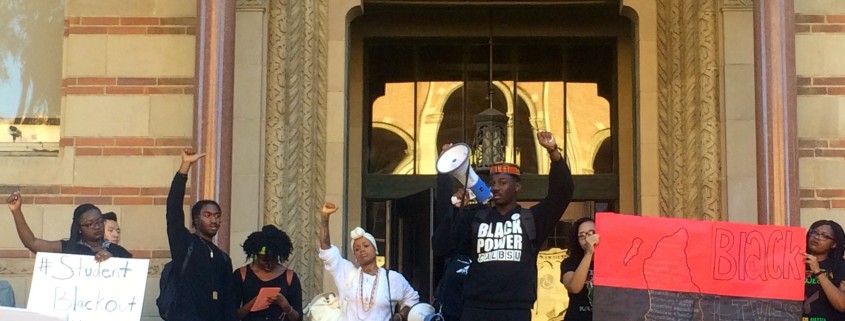The World Is Not a Safe Space
That’s one of the most common pseudo-witty quips that you’ll hear people say when they go on this long diatribe about how people nowadays are too sensitive and how the world never handed them anything and so on and so forth. Who knows, maybe they’ll even throw a “back in my day” in there for good measure.
The events that occurred at University of Missouri (Mizzou) sparked a larger conversation about the creation of safe spaces. A flock of overzealous journalists were dumbstruck when they were turned away from the students demonstrating to ameliorate the university’s climate. Mizzou is not the only modern-day example of this. Clairemont-McKenna’s dean was recently made to resign after responding to an increasingly tense campus climate by saying that the campus needs to do more to “welcome students that don’t fit our CMC mold.” And anyone with a social media platform heard about campus climate issues regarding frat parties, stickers, and posters. Students, both present and past, can attest that the underlying attitudes that lead to these events have been festering for quite some time. So what is it about a safe space that makes it so polemic?
To find the answer, we must first come to an understanding of what a safe space is. As is generally understood by those that have experienced them, a safe space, physical or otherwise, privileges a set of beliefs and convictions held by marginalized communities. They are, in turn, reinforced with community agreements that are designed to foster an open environment for those who normally feel uncomfortable sharing their perspectives or lived experiences. This element of a safe space is key to understanding its importance. Discourse (in this context, intellectual space that can be inhabited by anyone) is often dominated by those who have the confidence to comfortably assert their opinion. They, in turn, clash with those share that same comfort with differing opinions.
That’s pretty much how arguments go. The problem with structure is that it precludes those who feel more comfortable staying quiet. Without a safe space, there are those who go about their lives understanding that, “Yeah, things are bad, but if I keep my head down and do my work, they won’t get worse.” To be clear, there is nothing wrong with choosing to stay silent, so long as you have the option of voicing your perspective when you feel impelled to. Safe spaces help people from marginalized communities develop and reinforce the strength and conviction it takes to voice that perspective.
Criticisms of safe spaces typically derive from the defense of free speech. There are beliefs that have predominated in the status quo that are held to higher scrutiny and outright rejected in certain spaces. That in itself is nothing new. They happen everywhere from a Dodgers game to the Republican National Convention. The censure that goes on in this context, however, is different because those who hold these contemptuous views are called “racist” and “offensive,” and no one wants that cloud to follow them around. Those words conjure up images of Jim Crow and The Little Rock 9. The distinction to be made is that between speech that does or does not constitute hate speech. A meaningful dissection of what is and what isn’t hate speech is beyond the scope of this article. The boundaries of free speech have consistently been revisited and revised. While that discussion rages on, I offer a different approach to the issue. I assert that it is, in fact, those who criticize safe spaces that are out of touch with reality.
There are people in the United States of America who live in relative comfort. And they don’t like being told no, as in, “No, you can’t live here. We’re moving you to Manzanar” –Oh wait, that was Japanese-Americans during World War II.
Well, how about, “No, you can’t live here because FHA guidelines have stipulated this high value property off-limits to you even though you would otherwise qualify.” –Wait, that’s my bad again. Those were Blacks from the 1930s to the late 1960s.
Or maybe, “No, we can’t have that policy because any policy that takes into consideration past or present systematic prejudices constitutes ‘reverse racism.’” Alright, you get where I’m going with this.
The crux of the matter is that if anyone knows that the world is not a safe space, it’s communities of color, queer communities, lower income communities, differently abled communities, and undocumented communities. Unsafe space and perpetual discomfort is the quotidian reality. To seek and create and sustain safe space is to hold respite from those that normalize the dehumanization of disregarded communities. So long as the dehumanization of these communities exists, safe spaces will continue to be a valuable tool for the support and empowerment of its’ members.



Leave a Reply
Want to join the discussion?Feel free to contribute!